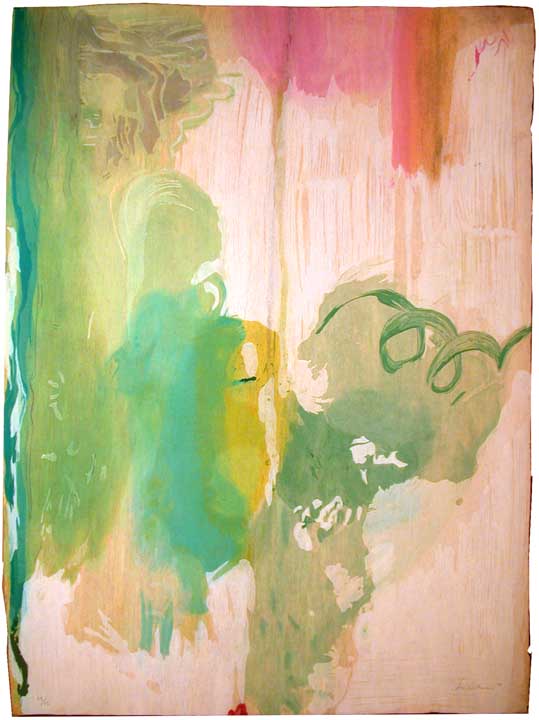As in Nature: Helen Frankenthaler Paintings
Clark Art Institute, Williamstown, Massachusetts
July 1–October 9, 2017
This exhibition comprises a selection of large paintings by Helen Frankenthaler from the 1950s through the 1990s, focusing on nature as a longstanding inspiration. Like many abstract artists, Frankenthaler continually tested the constraints of the genre, at times inserting into her compositions elements of recognizable subject matter that throw the abstract elements into relief. The paintings in this exhibition represent the full range of styles and techniques that she explored over five decades of work; while all are primarily abstract, they also contain allusions to landscape, demonstrating how Frankenthaler’s delicate balance between abstraction and a nuanced responsiveness to nature and place developed and shifted over time. As Frankenthaler once commented, “Anything that has beauty and provides order (rather than chaos or shock alone), anything resolved in a picture (as in nature) gives pleasure—a sense of rightness, as in being one with nature.”
No Rules: Helen Frankenthaler Woodcuts
Clark Art Institute, Williamstown, Massachusetts
July 1–September 24, 2017
In 1994, when being interviewed by printer/publisher Ken Tyler, Helen Frankenthaler stated, “There are no rules, that is one thing I say about every medium, every picture . . . that is how art is born, that is how breakthroughs happen. Go against the rules or ignore the rules, that is what invention is about.”
No Rules explores Helen Frankenthaler’s inventive and groundbreaking approach to the woodcut. The artist began creating woodcuts after experimenting with lithography, etching, and screen printing. She produced her first woodcuts,
East and Beyond (1973)
and her ethereal Savage Breeze (1974), by carving pieces of wood with a jigsaw, inking each block of wood separately and arranging the pieces of wood to print them on paper.
In Essence Mulberry (1977)
and Cameo (1980),
she invented a new technique termed “guzzying,” working the wood’s surface to achieve specific results when printed. Throughout her career, the artist worked with a variety of print publishers to push the medium in new directions. In 1983 she traveled to Japan and worked in traditional methods of color woodblock printing with an expert carver and printers to produce
Cedar Hill (1983), resulting in an entirely different, layered approach to color.
In the 1990s and 2000s, Frankenthaler continued to experiment with enthusiasm and daring. For Freefall and Radius (both 1992–93), the artist worked with dyed paper pulp to create the maquettes for the final woodcuts. In Tales of Genji (1998)
and Madame Butterfly (2000), she worked with a dazzling array of blocks and papers, collaborating with an expert Japanese carver, printers, and paper-makers to create serial images acknowledged to be landmarks in the evolution of the medium. Her final three woodcuts,
Snow Pines (2004),
Japanese Maple (2005),
and Weeping Crabapple (2009), pay homage to three different types of trees in strikingly divergent ways.





Comments
Post a Comment